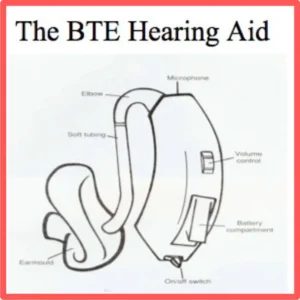The Ultimate Guide to Selecting Hearing Aids: What You Need to Know
Selecting hearing aids can dramatically improve your quality of life. They enhance your ability to communicate, engage, and navigate the world around you. With so many options available, making an informed decision is essential.
Understand Your Hearing Needs
Your lifestyle and specific hearing challenges play a significant role in selecting hearing aids.
- Pinpoint Trouble Areas
Consider when and where hearing difficulties occur most. Do you struggle in noisy environments, during phone calls, or at social gatherings? Identifying these situations helps prioritize the features you’ll need in your hearing aids. - Reflect on Daily Activities
Your routines, hobbies, and work environment impact the type of hearing aids that will suit you best. For instance, active individuals may benefit from devices with durability and noise cancellation, while tech-savvy users might prioritize Bluetooth connectivity.
Explore Hearing Aid Styles
Hearing devices come in several styles, each designed to suit different hearing needs, comfort preferences, and lifestyles. Understanding the options ensures you find the right fit.

1. Behind-the-Ear (BTE)
BTE hearing aids are worn behind the ear, with a thin tube or wire connecting the device to a custom earpiece or dome in the ear canal.
- Advantages:
- Suitable for mild to profound hearing loss.
- Offers larger batteries for extended use or rechargeable options.
- Durable and easy to handle, making it ideal for individuals with dexterity challenges.
- Considerations:
- Slightly more visible than other styles.
- May pick up wind noise in outdoor settings.
2. Receiver-in-Canal (RIC)
RIC hearing aids are similar to BTE devices but have the speaker (receiver) placed in the ear canal for improved sound clarity.
- Advantages:
- Smaller, more discreet design.
- Enhanced sound quality with advanced features like feedback cancellation.
- Available in rechargeable or disposable battery options.
- Considerations:
- Susceptible to earwax buildup on the receiver.
3. In-the-Ear (ITE)
ITE hearing aids are custom-molded to fit in the outer ear, offering a comfortable and personalized fit.
- Advantages:
- Easy to handle and insert, especially for those with dexterity issues.
- Supports advanced features like directional microphones and volume control.
- Considerations:
- Larger than in-the-canal models, making them more visible.
- May pick up more wind noise compared to smaller styles.
4. Completely-in-Canal (CIC)
CIC hearing aids fit entirely inside the ear canal, offering a nearly invisible appearance.
- Advantages:
- Best for those seeking a discreet option.
- Minimal wind noise and interference.
- Considerations:
- Limited battery life due to their compact size.
- Fewer features compared to larger styles.
5. Open-Fit Hearing Aids
A variation of BTE devices, open-fit hearing aids use a thin tube or dome to leave the ear canal partially open.
- Advantages:
- Natural sound for low-frequency tones.
- Ideal for mild to moderate high-frequency hearing loss.
- Considerations:
- Non-customized domes may feel less secure.
Pro Tip:
Discuss these styles with your hearing care provider to ensure you choose a device that aligns with your hearing loss and lifestyle.

Features to Consider in Hearing Aids
Hearing aids today come equipped with various features to enhance your listening experience. Some popular options include:
- Directional Microphones: Improves speech clarity by focusing on sounds in front of you.
- Noise Reduction: Reduces background noise in crowded environments.
- Bluetooth Connectivity: Streams audio directly from smartphones, TVs, and other devices.
- Rechargeable Batteries: Offers convenience and eliminates frequent battery changes.
- Feedback Cancellation: Eliminates high-pitched whistling sounds for comfort.
Collaborate with your hearing care provider to determine which features will make the most impact in your daily life.
Choose the Right Hearing Care Provider
Selecting the right hearing care provider is as important as choosing the right hearing aids. A trusted provider will guide you through testing, fitting, and maintenance to ensure your hearing aids work optimally.
What to Look for in a Hearing Care Provider
- Qualifications and Experience
Ensure your provider is licensed and has extensive experience in diagnosing and managing hearing loss. Ask about their background, certifications, and areas of expertise. - Comprehensive Services
A good provider doesn’t just sell hearing aids—they offer a range of services, including hearing tests, hearing protection, follow-up appointments, and troubleshooting support. - Personalized Care
Your hearing needs are unique, and your provider should take the time to understand your lifestyle and preferences. They should offer tailored solutions, not one-size-fits-all options. - Ongoing Support
Hearing aids require regular adjustments and maintenance. Choose a provider who offers continued care, warranties, and a commitment to your long-term hearing health. - Accessibility and Convenience
Select a provider with an office location and hours that are convenient for you. Some providers also offer remote services for added flexibility.
Building a Relationship
Your hearing care provider should feel like a partner in your hearing health journey. Open communication and trust are essential for achieving the best results with your hearing aids.
Test and Try Before You Buy
Testing hearing aids ensures you’re satisfied with their comfort, sound quality, and functionality.
- Take Advantage of Trial Periods: Many providers offer trial periods ranging from 30 to 60 days.
- Request Demonstrations: Try different styles and features to find the best fit for your needs.
Remember:
Communicate any discomfort or issues with your provider during the trial period for necessary adjustments.
Plan for Costs and Maintenance
Hearing aids are an investment in your quality of life, so planning is essential.
- Understand Costs: Prices vary based on style and features. Check if you have hearing insurance benefits. If you’re in the Sioux Falls area, call Stanford Hearing to verify your benefits!
- Schedule Regular Maintenance: Proper cleaning and care extend the life of your devices.
- Review Warranties: Ensure your hearing aids are covered for repairs or replacements.
Take the First Step Toward Better Hearing
Selecting hearing aids is a crucial decision that involves evaluating styles, features, and providers. With the right information and a trusted hearing care provider, you can confidently choose devices that fit your needs and lifestyle.
Ready to improve your hearing? Contact Stanford Hearing today to schedule a consultation. Let us help you find the perfect hearing aids and support your journey to better hearing!
